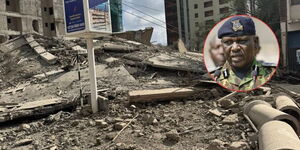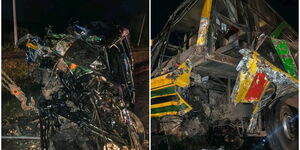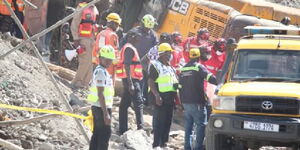When Kenya Police Force was established in 1907 by British colonial masters, security services were offered by the East African Trading Company (EATC).
In 1902, Kenya-Uganda Railway recruited and trained their own police officers who were tasked with guarding the transport line.
"In 1906 the Police Ordinance was established to create a new force in 1907, the Nairobi Mounted Police within the jurisdiction of the East Africa Protectorate," wrote the Kenya National Police Service website.
As the country became a British colony in 1920, Kenya Police which was made up of UK and Indian nationals received a new name, the King's Police Ordinance.
"Following Kenya's independence in 1963, the British officers were replaced with local Kenyan members," wrote the Kenya National Police Service website.
After independence, King's Police Ordinance was converted into Kenya Police Force that reported directly to the Prime Minister then later to the President.
Kenyan Police Force was changed to Kenya National Police Service after the promulgation of the August 2010 constitution.
The Kenya National Police Service which is headed by the Inspector General operates under the watch of the National Police Commission.
NPS has two major divisions such as the Kenya Police Service (Regular) which is mandated to enforce law in the country and the Administrative Police that is responsible for the lawful management of governance.
The Police IG is constitutionally mandated to exercise independent command over the Service while the Kenya Police and Administrative Police divisions are both headed by a Deputy Inspector General.
"Kenya Police is divided into Service Headquarters in Nairobi, Formations, General Duty Commands and Training Institutions," explains the NPS.
Kenya's constitution spells out that Administration Police Service must be commanded through a hierarchy that is separate from that of the Kenya Police.
However, the formation of both divisions are similar and the same in ranking and salary. The only glaring difference is the nature of work and the training.
The general duty comprises components with regions being the largest and police patrol bases being the smallest.
"Regional Police Commander is in charge of a Region (formerly Provinces), County Police Commander is in charge of Officers in the County, Sub-County Police Commander Superintends Sub-County (previously called District).
"Officer Commanding Station (OCS) is in charge of a Police Station in a Ward and oversees all its Police Posts and Patrol Bases (Ward Commander)," NPS outlines.
The National Police Service formations include General Service Unit (GSU), Diplomatic Police Unit, Kenya Police Air Wing, Presidential Escort, Maritime Police Unit and Kenya Police College.
The Kenya Police wear badges of ranks that begin with the Inspector-General which is equivalent to the 2-star general in the Kenya Defence Forces (KDF).
His or her two Deputy Inspectors (AP and Kenya Police) are equivalent to the one-star rank -brigadier general in the KDF.
While Senior Assistant Inspector-General is equivalent to a colonel in the Kenya Defence Forces.
Other positions include Assistant Inspector-General, Senior Superintendent, Superintendent, Assistant Superintendent, Chief Inspector, Inspector, Senior Sergeant, Sergeant, Corporal and Constable.












